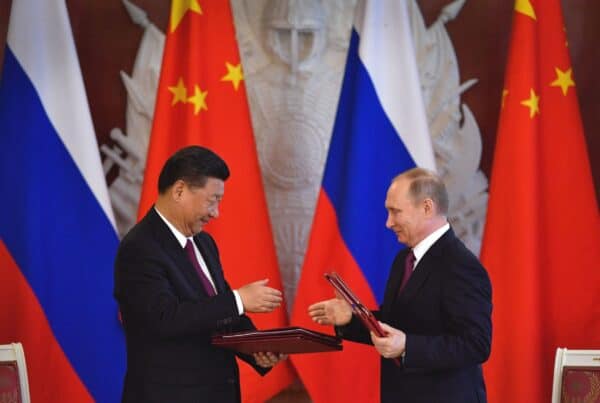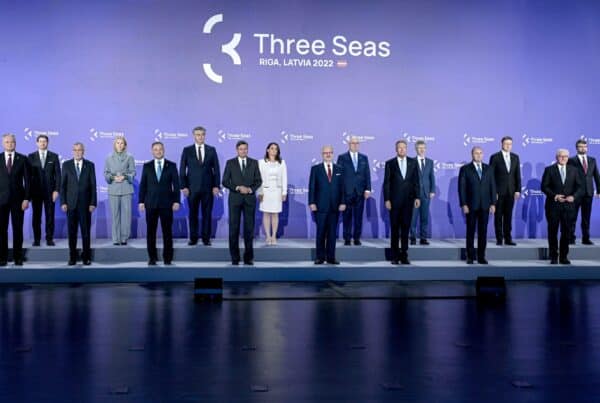Introductory text of the 2021-2024 cycle on Energy in Central Europe.
Central Europe is not immune to the problems of energy management, a subject that also worries the European Parliament. The latest political move is from a few weeks ago, signed by a group of centrist and conservative MEPs. “Renewable energy will not be enough for Europe to reach its climate neutrality target by 2050, the Union will need a nuclear renaissance to achieve it,” reads the Road to Eu Climate Neutrality by 2050 report commissioned by the centrist Renew Europe group and the European Conservatives and Reformists (ECR), the party of French President Macron. The study examined the costs and “geographical” needs of wind and solar compared to nuclear in two countries: the Netherlands and the Czech Republic. “The EU should put nuclear and renewables on the same level,” said Knotek, a Czech MP from President Macron’s political group Renew. . “Today, European policies are discriminatory when it comes to atomic energy.”
Solving a European problem: coal pollution
Air pollution is a major problem: not everywhere, but in many Eastern European and NATO countries, jointly set targets are ignored or hidden in the drawer by national authorities. In Poland, where 74% of annual energy demand is still met by coal, the first nuclear power plant with French technology will not open until 2024. The entire country, though prosperous and growing, has the worst air quality on the continent and the highest average annual death rate caused by emissions. The situation is no better in the Czech Republic, Slovakia, Hungary, Romania and Bulgaria.
According to reliable but conservative official data, on average more than 44,000 people die in Poland due to pollution, as if a small to medium-sized city disappeared every year. And the data may not tell the whole story. In the Silesian coal mines, the death rate from emissions among miners and their families is even higher, and made worse by the harsh working conditions in the coalfields.
Other situations to the east of the Union do not seem any less difficult, at least according to local diplomatic sources. In Czechia, coal remains a central element of energy policy, despite the fact that Prague has chosen to make extensive use of nuclear power. Slovakia has gone much further into nuclear, but still relies heavily on coal.
It is not much better in what are considered the two poorest countries in the European Union, Romania and Bulgaria. In Bucharest the authorities are doing little or nothing about the unchecked deforestation – including forest rangers and environmentalists who are being killed – that is wiping out 40% of Romania’s forests in 20 years. In Bulgaria, the centre-right government of Bojko Borissov was at least clear: “European and international treaties or not, without coal we will not move forward.”

Central European countries in the midst of an energy transition
The Czech Republic, which has a substantial industry, is negotiating with the EU to modernise its power plants and provide more guarantees for their modernisation and safety. The opposition forces that Prime Minister Babis will face in the October political elections (mainly Pirates and the European Mayors’ Party) are very sensitive to climate and environmental issues and are proposing a radical green shift. A transition that is being debated.
One transition that is not being debated is to nuclear power: this is the solution chosen by the Polish government for the year 2021. In order to escape the dependence on coal, to free society from the large number of victims of emissions caused by coal and lignite, and at the same time to achieve the ecological objectives set by the European Union, the Polish government believes that wind power and photovoltaics are not enough. It has therefore launched an ambitious programme to build six large-scale, state-of-the-art pressurised water nuclear power plants, at a projected cost of around 17 billion euros in Polish zlotys, leading up to 2040.
The Poland plan just presented by the sovereignist-technocrat Prime Minister Mateusz Morawiecki, to accelerate the farewell to coal, is bold, and for him politically dangerous. The rhetoric makes a lot of sense at least on paper : “as long as we have high economic growth rates and EU funds, we should take advantage of this to close one mine after another and create new jobs in renewable energy. »
The aim is to reduce dependence on coal and lignite, which currently provide about 70% of national energy needs, but at the cost of more than 47,000 premature deaths per year (source: European Environment Agency), between 2043 and 2048. And produce 20-25% of the needs with at least 6 new nuclear sites, and 30% with natural gas plants. The rest with wind power, now the second largest national energy source with 22% of total needs, and photovoltaics. Further expansion of wind turbines and photovoltaic fields on land and at sea, the authorities point out, would remove too many square kilometres, creating serious damage to nature, living space and economic activities. Environmentalists counter that building so many nuclear sites by 2043 is unrealistic, as the definitive foreign partner for the technology has not yet been finally chosen. They also note that key issues such as the destination of spent nuclear fuel need to be discussed.
According to Minister Zbigniew Gryglas: “We constantly need new energy sources. We need new power plants that will provide electricity to the dynamically growing Polish economy.”
Poland will not completely abandon coal, however. It is also known that renewable energies cannot meet the needs of the Polish economy. Grzegorz Tobiszowski MEP: “We are doing something very important for Europe. On the one hand we care about the environment, on the other hand we are maintaining energy security”.
President Duda also emphasized the “nuclear dream”: “This is a fight for climate and clean air. We have to make changes in our energy sector. We must have more gas-based energy. We will probably also build nuclear power plants.”
Poland will not do it alone, because it has no experience. It will work together with the French and the Americans. Piotr Muller, a spokesman for the Polish government, said: “We can expect these decisions to be taken as early as this year. Negotiations are underway. However, it would be irresponsible of me to say who is the favourite, because a lot of money is involved.
The government assumes that nuclear energy will contribute 20% of Poland’s energy mix. Piotr Naimski, government plenipotentiary for strategic energy infrastructure: “In 20 years we want to have 6-9 gigawatts of nuclear power, which means we will build 6 reactors at different locations in Poland.”
It is not yet known where the first Polish nuclear power plant will be built. According to Pawel Gajda, from AGH’s Nuclear Energy Department, “Currently, it is said that the first nuclear power plant will be located on the Baltic Sea. Two sites west of Gdańsk are currently under consideration.”
The second pillar of the Morawiecki plan is complete freedom from the Russians at Gazprom, who have already been ordered by international arbitration to pay billions for gas and oil sold at excessive cost to Poland. According to the National Bank of Poland, negotiations are active with the Americans from Westinghouse. According to some confidential information revealed by the American PBS, the Americans would provide 49% of the capital and the Polish public party 51%. But the French Areva-Framatome and the South Koreans KHNP are also running for the market. All are producers of PGE reactors, i.e. the latest generation of pressurised water reactors.
An exception, the Baltic 2021
The Baltic States are at the forefront of carbon neutrality, focusing on renewable energy as a primary energy source, electric transport, limiting fishing and nature conservation. But there are still knots to untangle: CO2 emissions, nuclear power, oil drilling…
Electric cars are favoured like nowhere else in the world, world records for wind turbines and the increasing use of underground rivers or biomass as a source of generation, high-tech excellence devoted to the green future in such bets as the development of technology to create biofuels and hydrogen propulsion from the most diverse sources, emission-reduction plans and CO2 neutrality at the top of the world, whatever it takes, public transportation is already largely powered by clean energy. And most importantly, lots of money to save the climate and the environment, in a bipartisan consensus, regardless of who governs.
Estonia, Latvia and Lithuania are the other face of the “north wind”, also in terms of environmental and climate protection policy, the switch to renewable energies and the reduction of emissions. They have one big problem in common: the very heavy legacy of decades of Soviet annexation and occupation. As such, they continue to fight against the heavy damage caused to the ecosystem on their three territories by the policy of giving priority to Soviet heavy industry, and by the USSR’s tradition of producing dirty or dangerous energy (fossil fuels, often the most polluting, nuclear power without safety or control), while ignoring or considering secondary ecological issues, starting with the fight against pollution of all kinds. From water pollution to emissions to deforestation.
Estonia, Latvia and Lithuania have modernised in various ways, but the fight against the poisoning of the air, water and environment caused by Soviet colonialism continues to have a major impact, even as a source of expenditure for the three sovereign budgets, inevitably reducing the funds available for positive environmental and climate policies, of which there is no lack. The good fortune of the three countries has been their entry into the European Union and NATO, as well as into the Eurozone. In summary, the situation of the three countries is characterized by great successes, a strong desire to be at the top of the free world, including in environmental matters, and long delays imposed by the former occupier, which must be made up for as time goes by.
Estonia is perhaps the most advanced of the three countries in the matter. This is also due to its strong potential in the internet economy and artificial intelligence, know-how that is also used by the government in environmental and climate policy. The main targets are those already achieved of consuming 25% of total renewable energy consumption by 2025 and doubling the percentage to 50% by 2050. As well as an 80% reduction in emissions. Thanks also to free public transport which reduces the use of private cars. The second important point was and remains the restoration of water and forests. The water is no longer poisoned as it was under Moscow’s rule, and natural forests cover 50% of the territory. Teleskivi, the trendy district of the capital Tallinn, is home to many environmental and climate protection think tanks in contact with the government. The proximity and close economic relations with Finland and Sweden, as well as the close proximity of the Finnish language, help to better work for the ecology.
In Latvia, the government has launched a National Energy Plan 2021-2030, but many consider it not ambitious enough. It plans to gradually increase the share of renewable energy in total energy consumption to 40%, then 50% and, in the long term, 67%. Good, then, but not like the Estonians. Similar but still better than Latvia for Lithuania, despite the commitment and goodwill of the government. Vilnius’ goal is to achieve 100% renewable energy use in total energy consumption by 2050. Mainly focused on wind energy. However, there are no hard programmes against the greenhouse effect. In Lithuania, the target is to reach 100% of total renewable energy consumption by 2050. But the serious problem remains on the emissions front, which is expected to increase by 6% by 2030.
A split in the Visegrad group?
The energy issue also has a political side: the Czech Republic is taking Poland to the European Court of Justice over the expansion of lignite mining facilities in Lower Silesia
For the first time, the issue of climate and environmental protection has divided the Visegrad Group (Poland, the Czech Republic, Slovakia and Hungary), the alliance of eastern EU and NATO members. Most importantly, for the first time, the government of one EU member state, in this case the Czech Republic, is taking the executive of another European country to the European Court of Justice over a dispute about environmental and climate policy. This is an important precedent, and the outcome of this confrontation will be decisive for the future of European climate and environmental policies and the entire industrial world, as well as for the quality of the air we breathe on the Old Continent.
The bone of contention is the large Polish open-cast lignite mine at Túrow, near the border with the Czech Republic. Without waiting for permission, the Polish Government has decided to expand the mine considerably. Only in this way, say the national-clerical sovereignists in power in Warsaw, elected in 2015, will it be possible to produce enough energy for the vital national economy and to compensate for the reductions imposed by the emission limits of the agreements within the European Union.
The Czech executive and diplomacy also recall that protests and calls for action against the environmental and climate damage caused by Turów began in 2016. Since then, nearby towns and villages have complained about deteriorating air quality and the drying up of several rivers, lakes and ponds on the Czech side due to water consumption caused by mining work on the other side of the border. According to Prague, soil pollution is also a serious problem in the medium and long term.
The Czech Republic will therefore take Poland to the European Court of Justice for illegal mining activities near the border between the two countries. This is the first time in the history of the EU that one Member State has sued another for environmental reasons. Czechoslovakia will also request an immediate halt to mining in Turów until the court issues a final judgment. According to Czech officials, Poland violated EU law last year by extending the mine’s licence until 2026 without carrying out the necessary public consultation or an environmental impact assessment. PGE has already requested a further extension until 2044.
Czech Foreign Minister Tomáš Petříček confirmed on 23 February that the Czech Republic will sue Poland in the European Court of Justice (ECJ) over illegal mining activities that it claims are negatively impacting several Czech villages. Prague will be represented at the ECJ hearing by its deputy foreign minister, Martin Smolek, a sign of the political importance of the issue for the Czech Republic, which also faces tough parliamentary elections in October. The Polish government, say Prime Minister Andrej Babis’ ministers, has ignored all our requests for consultation and refuses to listen to the positions and demands of our citizens and their organisations, especially in the border areas.
Water issues, another challenge of the energy transition
In December 2020, the European Commission had supported the Czech Republic’s claim that Poland was in breach of the Environmental Impact Assessment Directive, which would require cross-border consultation with the Czech Republic and Germany.
The lignite mine, operated by the state-owned Polska Grupa Energetyczna (PGE), has long been criticized by officials and NGOs in Czechoslovakia and Germany, as well as by residents of the affected areas.
For the Czech Republic, the main concern is water supply, as the Túrow mine is an open pit mine, which drains water and jeopardizes the water supply of the neighbouring villages.
“In 2020 alone, the water table in the region fell by eight metres, which is double what PGE had predicted for 2044,” says Milan Starec, a resident of the Liberec region in the Czech Republic.
“Our concerns have been replaced by fear. It is crucial that our government demand an end to illegal mining, as PGE still refuses to take responsibility, while seeking permission to destroy our water resources and neighborhood for another 23 years.”
The negative effects of the mine are also felt in Germany. The mine pollutes the Neisse River in Lusatia, lowers groundwater levels and causes land subsidence which can damage houses around the town of Zittau. In February, the Saxon parliament asked the German government to accept the Czech complaint if it was brought before the ECJ.
Over the past year, many efforts have been made to urge the European Commission to act. Members of the European Parliament issued a joint declaration in support of the petitions of concerned Czech citizens. The International Commission for the Protection of the Oder River (ICPO), composed of Polish, German and Czech delegates, has described the mine as a “problem of supra-regional importance” requiring coordinated action between the three countries.
It is not clear whether the EU will take a position. In December, the European Commission said, on the one hand, that Poland, with its decisions on the mine, had violated the Union’s permits, procedures and transparency rules, but, on the other hand, it deemed protests against the mine’s expansion based on the theme of environmental damage to be unfounded, as they “do not provide sufficient evidence or arguments”. Thus, in the eyes of European lawyers, one duelist can win as well as the other in the climate confrontation in the East.
Balkans: other problems also exist towards the South.
Environmentalists accuse coal-fired power plants in Serbia and Bosnia, which operate with Beijing money, of damaging the environment and habitat. But local authorities say pollution is within legal limits.
The explosion of pollution, and not only of the air, that the Balkans have been experiencing for some time, would be the fault of Chinese investments. This is the accusation made by various experts in the environmental sector. In particular, their industries are accused of being harmful to the environment and the habitat. In fact, many houses and lands have been slowly surrounded by huge lakes filled with coal ash and slag.
In fact, Serbia has the highest rate of pollution-related deaths in Europe, according to a recent UN environmental report, which found that air pollutants are responsible for almost 20% of premature deaths in Western Balkan cities. In addition, according to the document, emissions from coal-fired power plants alone caused about 8,000 cases of bronchitis in children and 2,000 in adults, not including other respiratory diseases and cancers caused by air pollution.
Along with Africa, the Western Balkans is a major hub for Chinese investment in coal-fired power plants. In Serbia, Beijing’s coal capacity has almost tripled since 2016, while it has almost doubled in Bosnia. One of the main reasons for this success is that EU funding sources are almost non-existent for these projects, as they are focused on renewable energy. The EU’s goal, after all, is to shift energy production to renewable sources to achieve zero carbon emissions by 2050. So it was easy for China to find fertile ground in the region. So much so that today Beijing has become the only player available when it comes to using local coal to increase energy production.
Miljan Radunovic, a member of the Serbian National Convention for the European Union, told Investment Monitor that the Chinese started building without conducting a proper environmental impact assessment. A reason that led Bankwatch to file an official complaint with the European Energy Community. The Institute of Industrial and Systems Engineers (IISE) also made serious accusations: “Doing business with China in this region involves highly politicised, state-to-state agreements that are not made public. We are talking about mafia-like structures of government procurement and tendering where party loyalists get the best subcontracting opportunities. Environmental considerations are very secondary.”
This thesis is supported by the fact that the eight most polluting power plants in Europe are all located between Serbia and Bosnia-Herzegovina. It is no coincidence that the Kostolac B
plant in Serbia and the Tuzla plant in Bosnia are vying for the top spot, as they produce most of the sulphur dioxide produced by the EU and Balkan countries. Both plants have recently attracted a lot of interest from Beijing. The China Exim Bank for the Tuzla plant has granted the Bosnian government a loan equal to 85% of the 720 million euros planned for the major expansion of the 715-megawatt coal-fired plant. This initiative is part of the Belt and Road project, the massive trade and infrastructure network linking Asia to Europe and Africa and reviving links along the ancient Silk Road.





